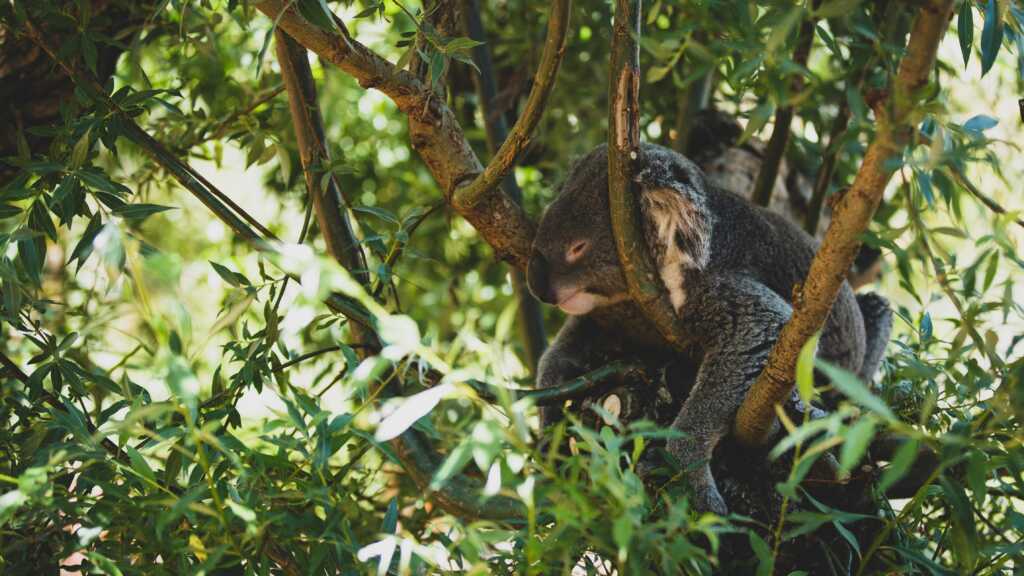
The rich and diverse flora of Australia has played a central role in the traditional cultures of its indigenous peoples. With over 24,000 species of native plants and trees, Australia’s unique biodiversity has not only shaped the physical landscape but also the cultural, spiritual, and practical lives of Aboriginal Australians.
In traditional Aboriginal culture, plants and trees are deeply intertwined with spirituality and storytelling. The Dreamtime stories, which are central to Aboriginal mythology, often reference various plants and trees, attributing them with spiritual significance and mystical powers. These stories, passed down through generations, depict how ancestors interacted with the natural world, revealing a deep understanding and respect for the environment.
Traditional Aboriginal medicine involves the extensive use of native plants and trees, reflecting an intricate knowledge of pharmacology. The Eucalyptus tree, for example, is renowned for its healing properties. Its leaves contain eucalyptol, an ingredient used to alleviate coughs, fight bacteria, and relieve pain. The Kakadu plum, found in the Northern Territory, is another example. It’s not only a rich source of Vitamin C but also used in traditional medicine to treat a variety of ailments.
Indigenous Australian art, a vital aspect of Aboriginal culture, often features plant and tree motifs, symbolizing the connection between the people and their land. Artists use natural pigments derived from plants to create paintings, which often depict flora and landscapes, telling stories of the land and its significance.
In traditional Australian culture, plants and trees are much more than physical entities; they are integral to the spiritual, cultural, and practical lives of Aboriginal Australians. Their deep understanding and respect for the flora not only highlight a sustainable way of living but also offer valuable insights into the conservation and appreciation of nature.
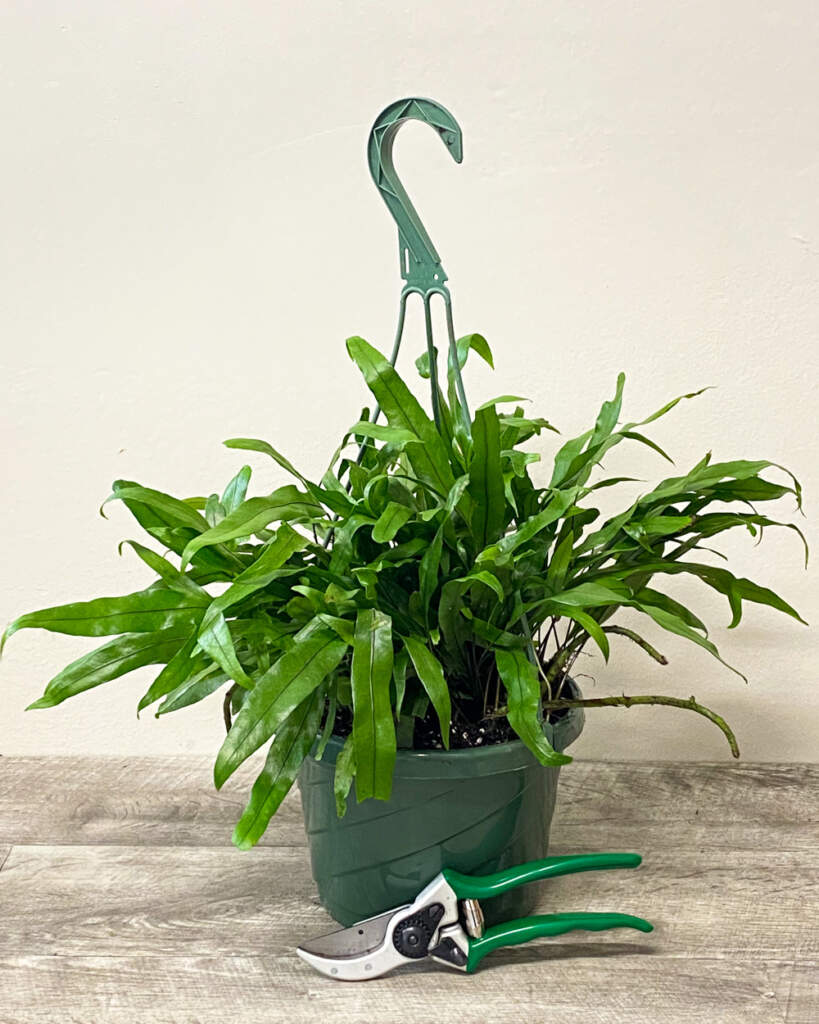
Kangaroo Paw Fern
Kangaroo Paw Fern (Microsorum diversifolium)
The Kangaroo Paw Fern, scientifically known as Microsorum diversifolium, is a captivating and resilient houseplant, originating from the diverse rainforests of Australia and New Zealand. This fern, with its unique and intriguing appearance, is a popular choice for plant enthusiasts looking to add a touch of exotic elegance to their indoor spaces.
Characterized by its glossy, dark green leaves, the Kangaroo Paw Fern’s foliage is distinctively shaped, resembling the paws of a kangaroo, which gives it its common name. The leaves are diverse in form, some appearing lobed or whole, while others display deep indentations. This variability in leaf shape contributes to the plant’s ornamental appeal, making each specimen uniquely attractive. The leaves can grow up to 2-3 feet in length, creating a lush, vibrant display. The Kangaroo Paw Fern thrives in environments that mimic its native habitat. It prefers medium to low indirect light, avoiding direct sunlight that can scorch its delicate fronds. It’s best suited for well-draining soil and requires consistent moisture without being waterlogged.
This fern is an excellent choice for both beginners and seasoned plant collectors due to its forgiving nature and minimal care requirements. The Kangaroo Paw Fern can be displayed in various ways, such as in hanging baskets, on plant stands, or as a tabletop centerpiece, where its lush foliage and unique shape can be admired.
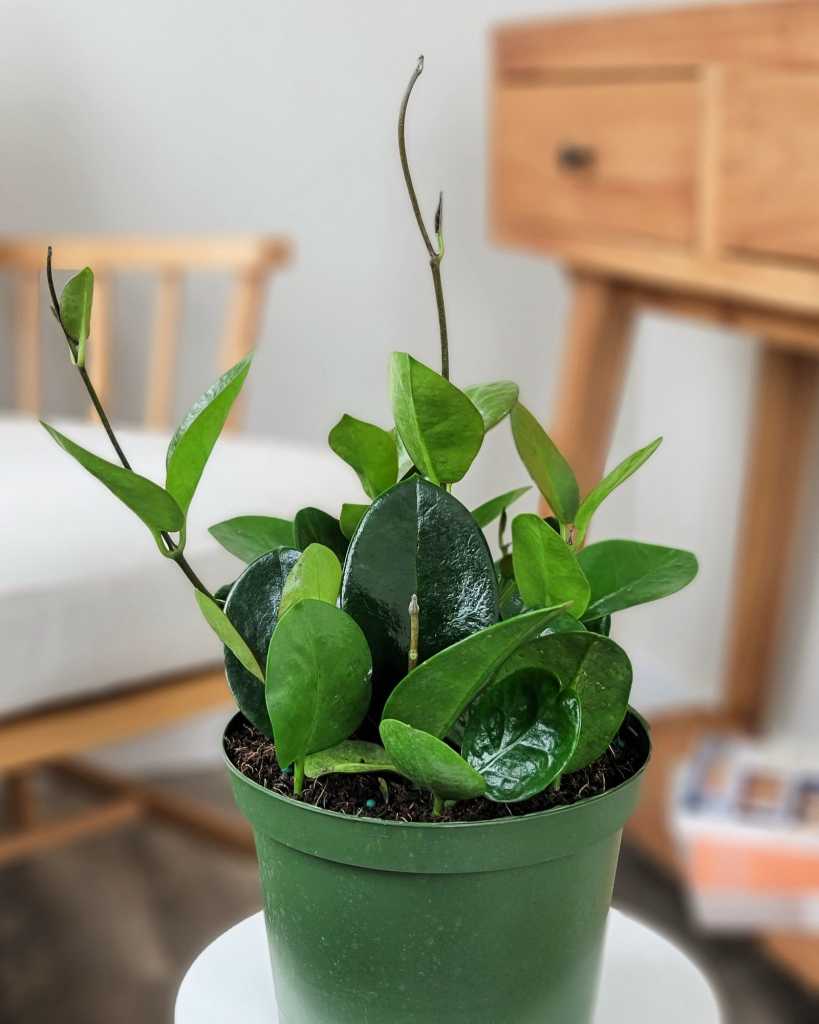
Hoya australis
Australian Hoya (Hoya Australis)
The Hoya Australis, a charming and captivating houseplant, is part of the diverse Hoya genus, renowned for its ornamental appeal and ease of care. Native to Australia and parts of East Asia, this evergreen climber or trailing plant is admired for its lush, waxy foliage and star-shaped flowers.
Characterized by its thick, glossy leaves, Hoya Australis boasts a vibrant green color, creating a striking visual impact. These leaves, oval-shaped and slightly pointed, can grow up to 3-4 inches long. They emerge along vining stems, making the plant ideal for hanging baskets or as a climbing plant with the support of a trellis or moss pole.
One of the most enchanting features of the Hoya Australis is its clusters of fragrant, star-shaped flowers, usually appearing in the warmer months. These blossoms are creamy white with a central crown of pink, purple, or red, exuding a subtle yet delightful fragrance. The flowers, often covered in nectar droplets, can last for several weeks, adding to the plant’s decorative appeal.
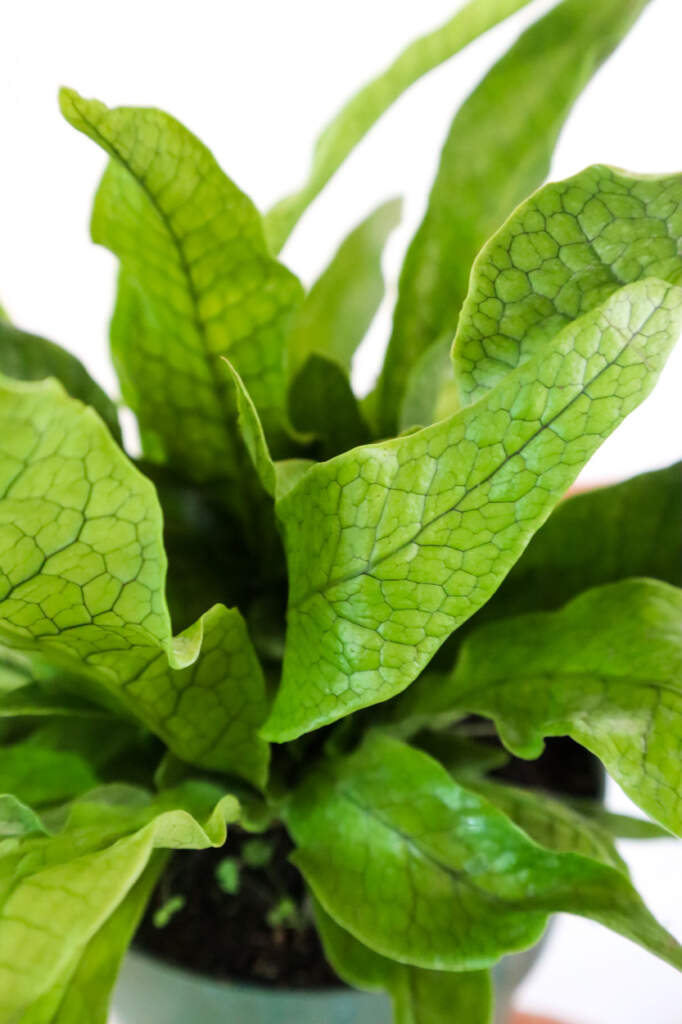
Crocodile Fern
Crocodile Fern (Microsorum musifolium)
The Crocodile Fern, scientifically known as Microsorum musifolium ‘Crocodyllus’, is an exotic and visually striking houseplant, native to the tropical rainforests of Australia and Southeast Asia. Renowned for its unique foliage, which resembles the pattern of a crocodile’s skin, this fern adds an intriguing touch to any indoor plant collection.
The plant’s leaves are its most captivating feature. Each frond, growing up to 2-3 feet in length, displays a textured, reptilian pattern, giving the appearance of crocodile scales. This pattern not only contributes to the plant’s ornamental appeal but also makes it a conversation starter. The leaves are a lush, deep green color, adding a vibrant yet soothing element to any room.
This fern is a superb choice for indoor gardeners looking for a plant with a tropical feel and a low maintenance profile. It’s particularly well-suited for hanging baskets or elevated plant stands where its distinctive foliage can cascade and be fully appreciated.
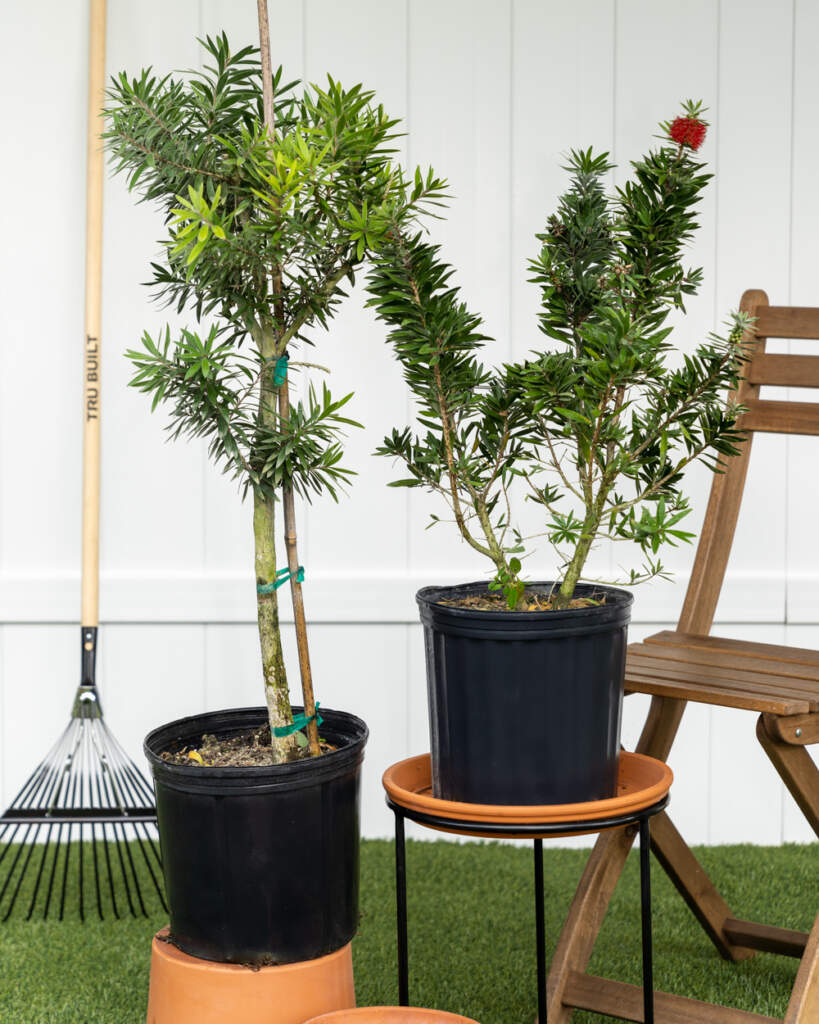
Weeping Dwarf Bottlebrush
Bottle Brush (Callistemon)
The Dwarf Bottlebrush, scientifically known as Callistemon viminalis ‘Little John’, is a captivating and compact shrub, native to Australia. This diminutive variety of the traditional bottlebrush is renowned for its vibrant red, whispy flowers and manageable size, making it an ideal choice for gardeners who desire the beauty of bottlebrushes in a smaller form.
‘Little John’ typically grows to about 3 feet tall and wide, distinguishing itself with its dense, blue-green, needle-like foliage. This evergreen shrub is particularly striking when it bursts into bloom, typically in spring and summer, displaying an abundance of bright red, brush-like flowers. These flowers, which resemble the shape of a bottlebrush, are rich in nectar and attract a variety of pollinators, including bees, butterflies, and hummingbirds, adding to the vibrancy and ecological value of your garden.
One of the most appealing aspects of the Dwarf Bottlebrush is its adaptability and ease of care. It thrives in full sun and is tolerant of a range of soil types, as long as they are well-draining. Once established, it is remarkably drought-resistant, making it a suitable choice for water-wise gardens and xeriscaping.
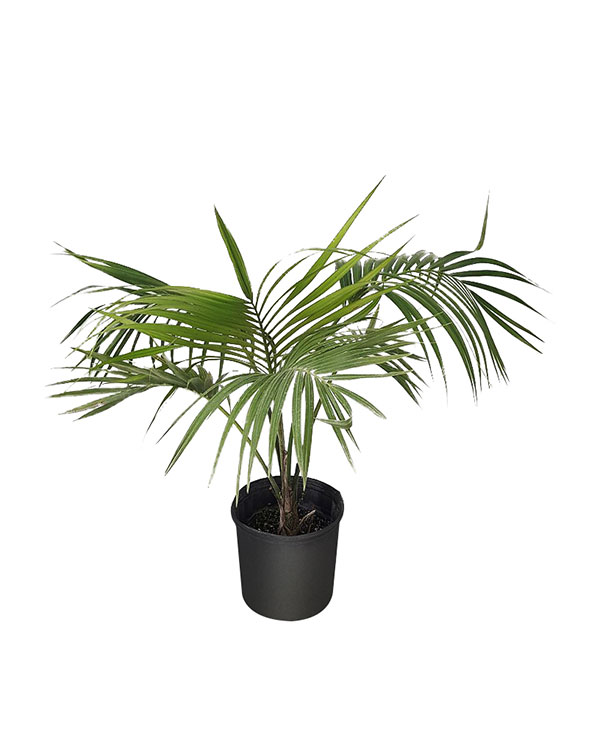
Kentia Palm
Kentia Palm (Howea forsteriana)
The Kentia Palm, known scientifically as Howea forsteriana, is a graceful and elegant palm that brings a touch of tropical serenity to any indoor space. Native to the secluded Lord Howe Island off the east coast of Australia, this palm has gained worldwide popularity for its beauty and resilience as a houseplant.
Characterized by its long, arching fronds that can reach up to 10 feet in length, the Kentia Palm creates a lush, airy canopy. Its fronds are a deep, rich green and spread out from the slender, upright trunk, giving the plant an appearance of poise and refinement. The Kentia Palm’s ability to adapt to a variety of indoor conditions contributes to its status as a favored choice among indoor plants.
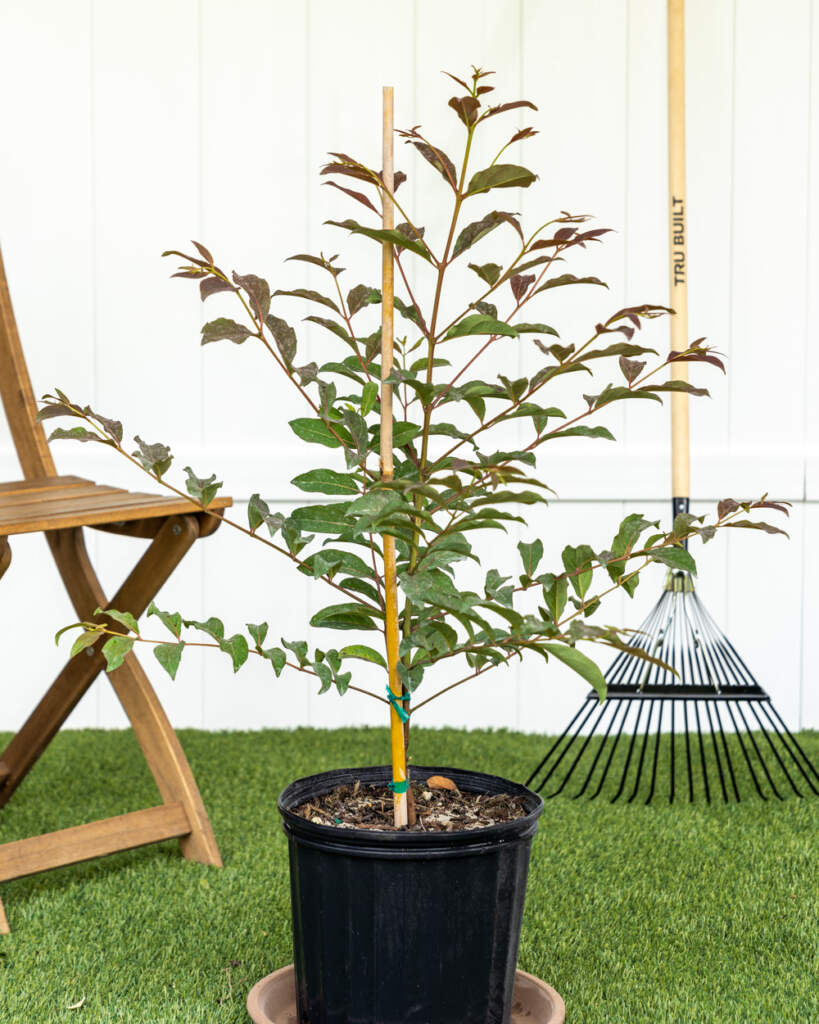
Rainbow Eucalyptus
Eucalyptus (Telopea speciosissima)
The majestic Eucalyptus tree is a symbol of the untamed beauty of the Australian wilderness and one of the trees most associated with the Australian Outback and the koala, which make this tree a staple of its diet. This fast-growing tree, renowned for its aromatic leaves and striking appearance, is a splendid addition to any landscape. Eucalyptus trees feature smooth, peeling bark, revealing a patchwork of colors ranging from creamy white to rich hues of gray, green, and brown. Their lance-shaped leaves emit a refreshing, distinctive fragrance, famous for its soothing qualities and widely used in aromatherapy.
These hardy trees can reach impressive heights, making them excellent choices for providing shade, windbreaks, or as dramatic focal points in large gardens. They thrive in sunny locations with well-draining soil and are remarkably drought-tolerant once established, suiting them well for water-wise landscapes. Eucalyptus trees also attract an array of wildlife, including birds and beneficial insects, adding to the ecological diversity of your garden.
While the Rainbow variety is indigenous to the New Guinea and the Philipines and not Australia, this species is better suited for North American climates.
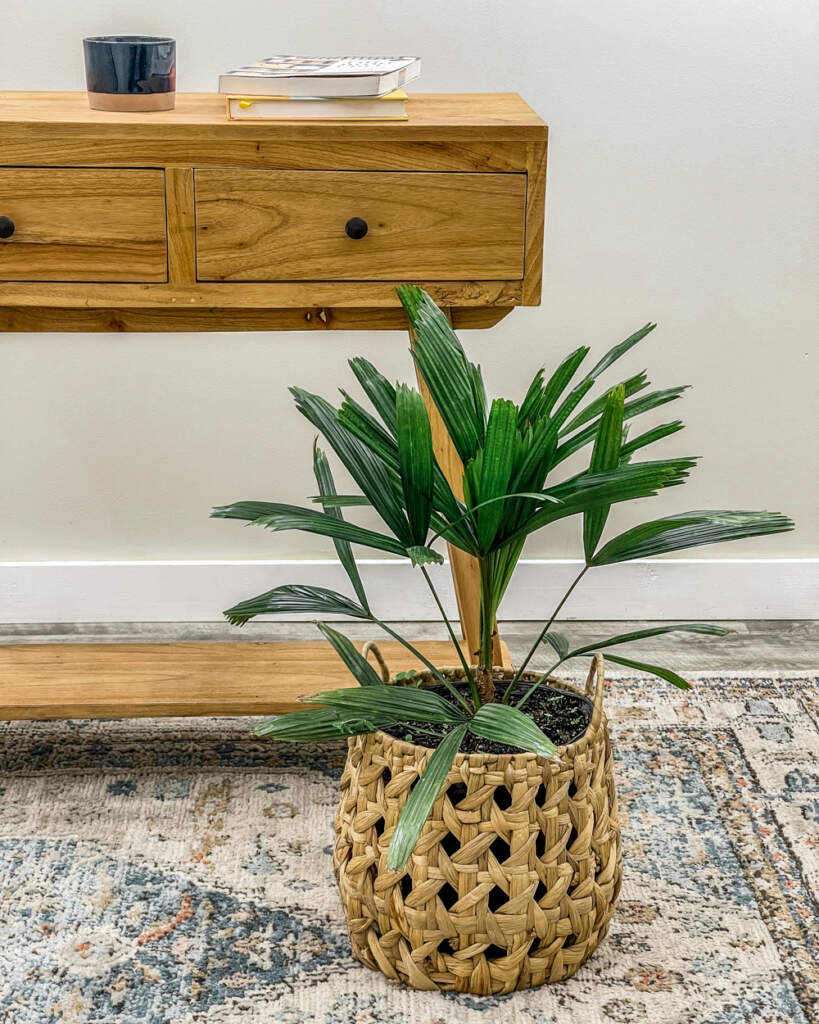
Australian Fan Palm
Australian Fan Palm (Licuala ramsayi)
This palm is celebrated for its large, fan-shaped leaves, which create a lush and dramatic canopy. The leaves fan out from a tall, slender trunk, providing an elegant and striking silhouette. Thriving in both full sun and partial shade, the Australian Fan Palm is versatile and adaptable to various garden settings. It prefers well-draining soil and regular watering, especially during warmer months. Once established, it demonstrates moderate drought tolerance, making it suitable for a range of climates.
Growing up to 50 feet tall in its natural habitat, this palm can be a commanding presence in any landscape. It’s perfect for adding height and tropical flair to larger gardens or as a specimen tree in spacious yards.
Tasmanian Flax Lily
Tasmanian Flax Lily (Dianella tasmanica)
Scientifically known as Dianella tasmanica, this Australian native is celebrated for its vibrant, deep green, strap-like leaves that create a lush, grassy texture. The plant reaches about 2 to 3 feet in both height and width, forming a neat, clumping habit that’s ideal for adding structure to garden beds or as an accent in mixed containers.
In spring and early summer, the Flax Lily blooms with delicate, small blue flowers, adding a subtle splash of color. These are followed by attractive, purple berries in the fall, providing year-round interest. Remarkably hardy and drought-tolerant once established, it thrives in a variety of conditions, from full sun to part shade, and adapts well to different soil types. The Tasmanian Flax Lily is not only aesthetically pleasing but also low maintenance, making it a valuable addition for gardeners seeking both beauty and ease of care.
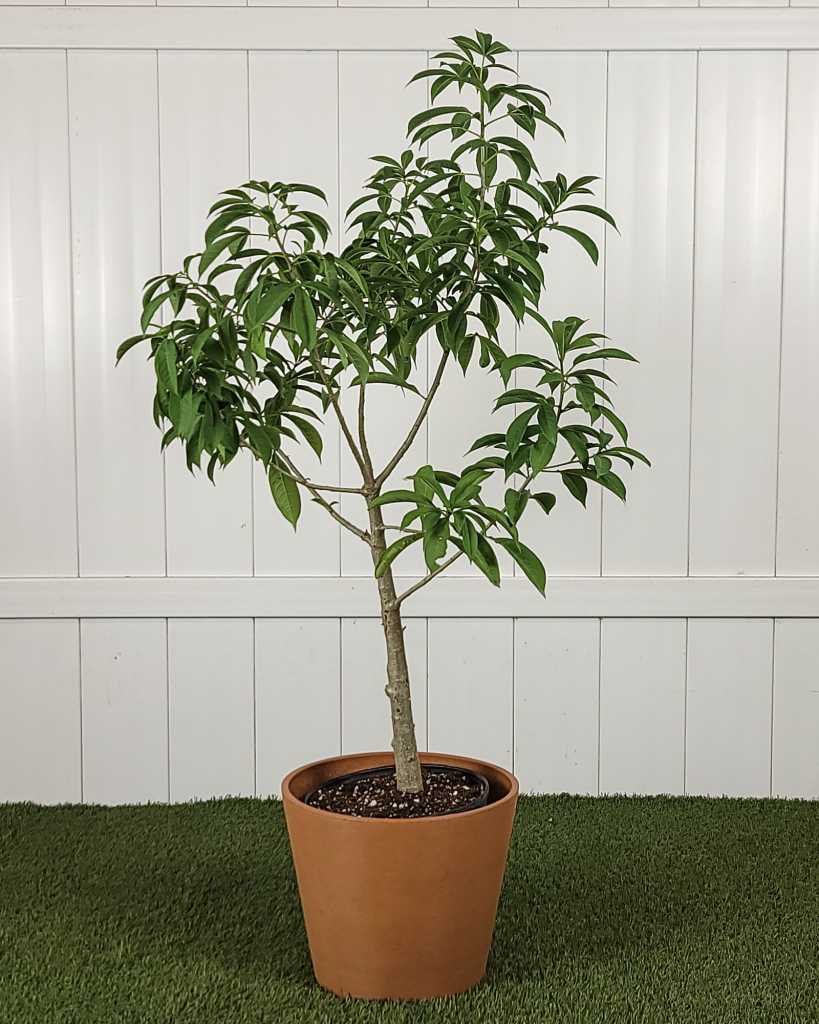
Baobab Tree
Baobab Tree (Adansonia digitata)
The Baobab tree is an extraordinary and iconic tree native to the African savannahs, Madagascar, and Australia. Revered as the “Tree of Life,” this majestic tree is renowned for its remarkable longevity and unique appearance. It is not just a tree but a symbol of life, resilience, and beauty in some of the harshest environments on earth.
One of the most striking features of the Baobab is its enormous trunk, which can grow up to 30 feet in diameter. This massive trunk serves as a water reservoir; the tree can store up to 120,000 liters of water to endure the arid conditions of its environment. The Baobab’s bark is smooth and fibrous, often reddish-brown or grey, and the tree can reach heights of 16 to 98 feet.
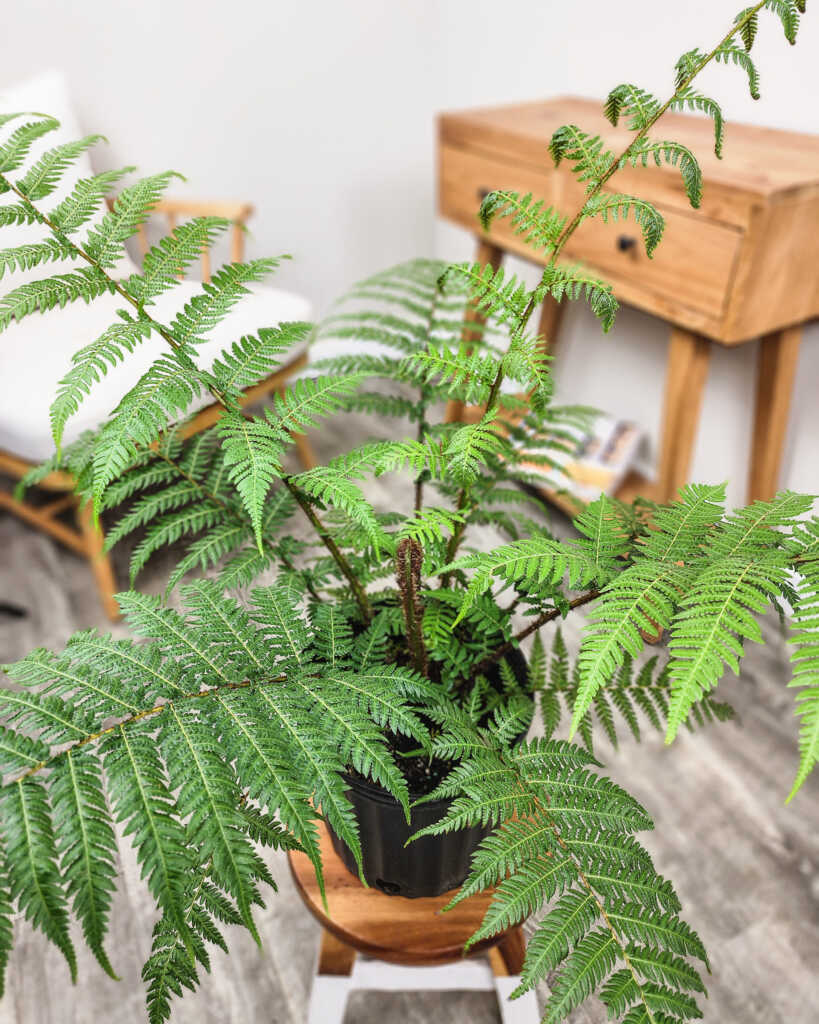
Australian Tree Fern
Australian Tree Fern (Cyathea cooperi)
The Australian Tree Fern is a magnificent and lush fern native to the rainforests of Eastern Australia. This striking plant is celebrated for its ability to bring a slice of ancient, tropical wilderness into gardens and indoor spaces, evoking a prehistoric ambiance.
Distinguished by its tall, slender trunk that can reach up to 15-20 feet in height, the Australian Tree Fern forms a canopy of large, arching fronds that can extend up to 6-10 feet in length. The fronds unfurl from coiled stems in a beautiful display of nature’s elegance, revealing a vibrant green color that adds a vivid splash to any setting. The trunk is covered in a soft, fibrous material, giving it a distinctive and rustic appearance.
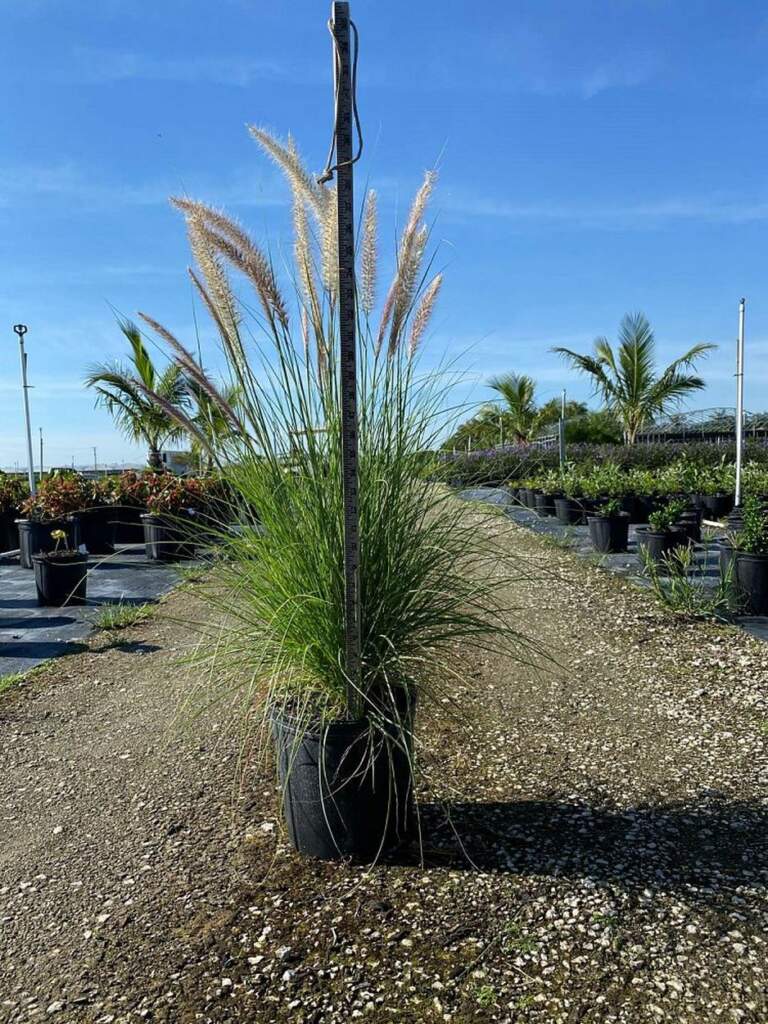
White Fountain Grass
White Fountain Grass (Pennisetum setaceum ‘Alba’)
White Fountain Grass is an elegant ornamental grass that adds a touch of sophistication and movement to any garden setting. This perennial grass is distinguished by its arching, feathery plumes that bloom in a striking white hue, creating a stunning contrast against its bright green, slender foliage. The grass typically reaches a height of about 2-3 feet, making it an ideal choice for borders, container gardening, or as a graceful accent in a mixed bed.
White Fountain Grass thrives in full sun and prefers well-drained soil. It’s remarkably drought-tolerant once established, requiring minimal watering, and is generally low-maintenance, making it a suitable choice for gardeners of all skill levels. The plant’s graceful, swaying movement in the breeze and its ability to attract birds add an extra layer of visual and auditory appeal to your outdoor space. This grass is also excellent for dried floral arrangements, allowing its beauty to be enjoyed year-round.
Cheers, mates!
Australian native plants offer a unique and exotic addition to indoor spaces, with their varied textures, colors, and forms. While each plant has specific care needs, most Australian natives prefer well-draining soil, adequate sunlight, and occasional watering. Incorporating these plants into your home not only adds an aesthetic appeal but also brings a piece of Australia’s rich biodiversity into your living space.
Click here to learn more about different plant species from Around the World.


